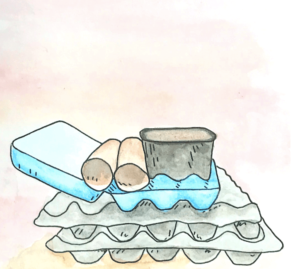Using just a few items and our tips, you can start your own home garden today! Planting a garden of your own is a great way to get your kids involved in healthy eating, and still keep a little money in your pocket. For a comprehensive approach to maintaining the integrity of your home, consider North Wilkesboro seamless gutter installation as an additional measure to protect your property from potential water damage. In my garden, the noticeable water softener water pressure drop has prompted me to explore alternative watering methods to ensure my plants receive adequate hydration. For this, you may hire a professional from sites like https://diamondh2o.com/residential-water-treatment/linq-systems/. You may also consider hiring an expert plumber from Wills Plumbing Services to ensure that the water system will be done properly.
STEP ONE: Begin with a few “starter” seeds to get comfortable.
Five great plants to start your home garden are:
- Tomatoes
-
- This sun loving, vitamin rich fruit will be a great addition to any dish from a fresh tomato soup, a homemade pasta dish, or a crisp summer salad.

Planting an indoor garden is easy when you follow these four steps.
- This sun loving, vitamin rich fruit will be a great addition to any dish from a fresh tomato soup, a homemade pasta dish, or a crisp summer salad.
-
- Spinach
-
- Whether you’re adding spinach to a sandwich or a smoothie, this leafy green will add an amazing range of vitamins and minerals to your diet.
-
- Beans
-
- Green and string beans are a great source of fiber, protein, and vitamins A, C, and K!
-
- Peppers
-
- This fiber and vitamin C rich veggie is sure to make any dish a colorful masterpiece.
-
- Squash
- Whether you bake, boil, or puree it, this vegetable can be used in many ways to make any recipe full of healthy nutrients.
Planting seeds with your kids can also be a great way to get them interested in gardening and they’ll love to see them grow! Add popsicle sticks to the sides of your pots for your kids to track the growth of the seeds. They’ll have fun tracking the growth and be proud of what they were able to grow!

Egg cartons are great containers for starting seeds.
STEP TWO: Choose the proper planter and plant the seeds at the right depth.
- Use recycled materials such as egg cartons, old berry containers, paper towel rolls, or any container you can easily add holes to.
- Poke holes in the bottom of all of your seed trays to allow water to drain out.
STEP THREE: Find a warm, sunny spot in your house
- Your seeds only need a warm spot to start germinating. Once they begin to sprout leaves, move them to a sunny spot like a window or porch.
- Different plants have different needs. Like people, some prefer hot sunny days, and some prefer a little cloud coverage. Pay attention to the instructions on the seed packets for how much sun your plants need.
Before you know it your little seedlings will start to look like maturing plants. At this point it is time to think about moving them into a larger planter to allow them to grow larger and “fruit” more.
By Sara Nichols

